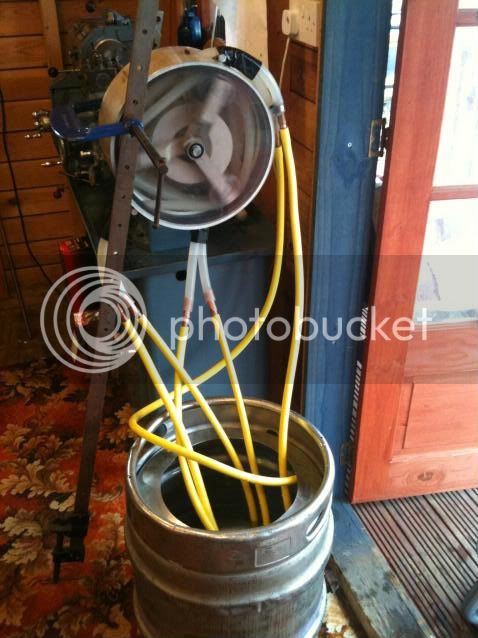silverbrewer
Well-Known Member
Good news! My mate comes back from Mexico tomorrow and so things should get going on the MK 2 pump very soon. (once I've stopped playing with my new burners that is!)
Wow JVD, at those high revs your pump uses, the tube fails quite quickly! Is the tube silicone tube like the stuff we use, or is it special for that pump, as it looks to be black in the link. I am hoping that using silicone tube, and at my much reduced rpm of only 50 rpm the tube will last more like months, but we will only truly know after......err......months! Your pump makes the tube bend quite drastically around the rollers compared with squeezing it gently against an outer wall. My tube spec says it is ideal for use in perastaltic pumps, so my hopes are at least based on some sound info.
I will fit an hour meter to my pump so it's run time can get logged, and will keep my fingers crossed. Mind you, I've got to make it first!!!
How do you run your pump? Do you slow it down for variable flow rates?
Wow JVD, at those high revs your pump uses, the tube fails quite quickly! Is the tube silicone tube like the stuff we use, or is it special for that pump, as it looks to be black in the link. I am hoping that using silicone tube, and at my much reduced rpm of only 50 rpm the tube will last more like months, but we will only truly know after......err......months! Your pump makes the tube bend quite drastically around the rollers compared with squeezing it gently against an outer wall. My tube spec says it is ideal for use in perastaltic pumps, so my hopes are at least based on some sound info.
I will fit an hour meter to my pump so it's run time can get logged, and will keep my fingers crossed. Mind you, I've got to make it first!!!
How do you run your pump? Do you slow it down for variable flow rates?






















































![Craft A Brew - Safale S-04 Dry Yeast - Fermentis - English Ale Dry Yeast - For English and American Ales and Hard Apple Ciders - Ingredients for Home Brewing - Beer Making Supplies - [1 Pack]](https://m.media-amazon.com/images/I/41fVGNh6JfL._SL500_.jpg)





